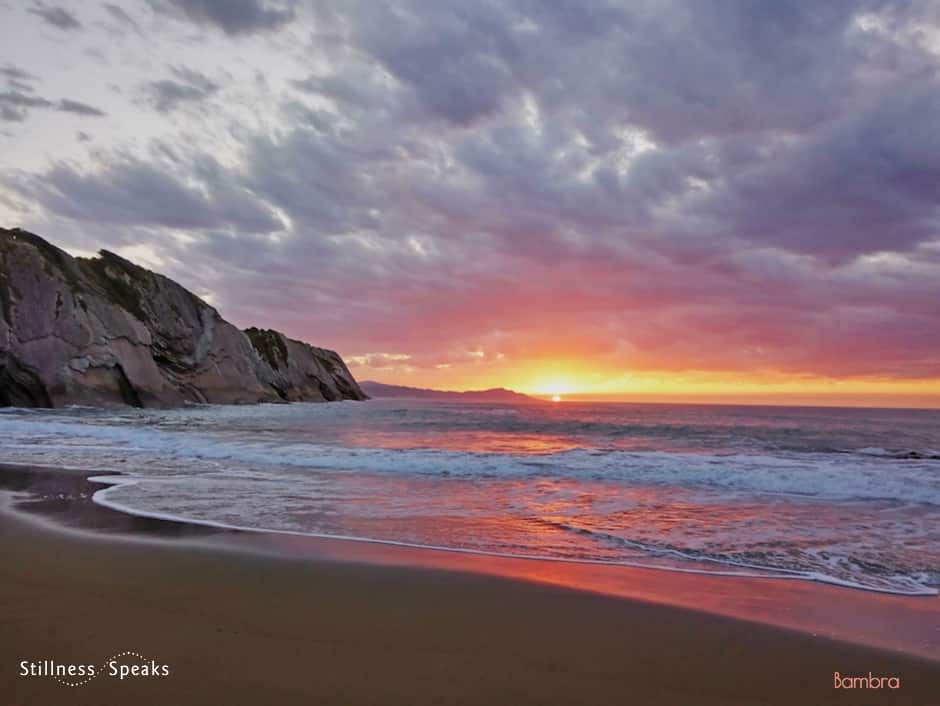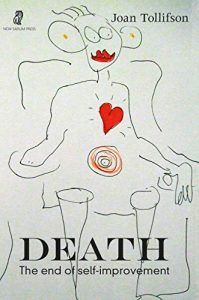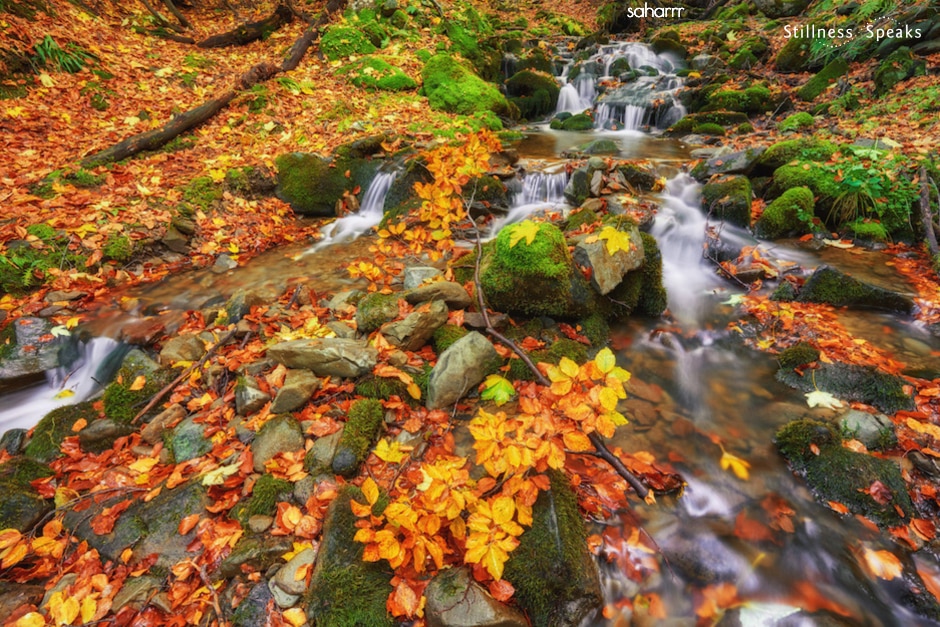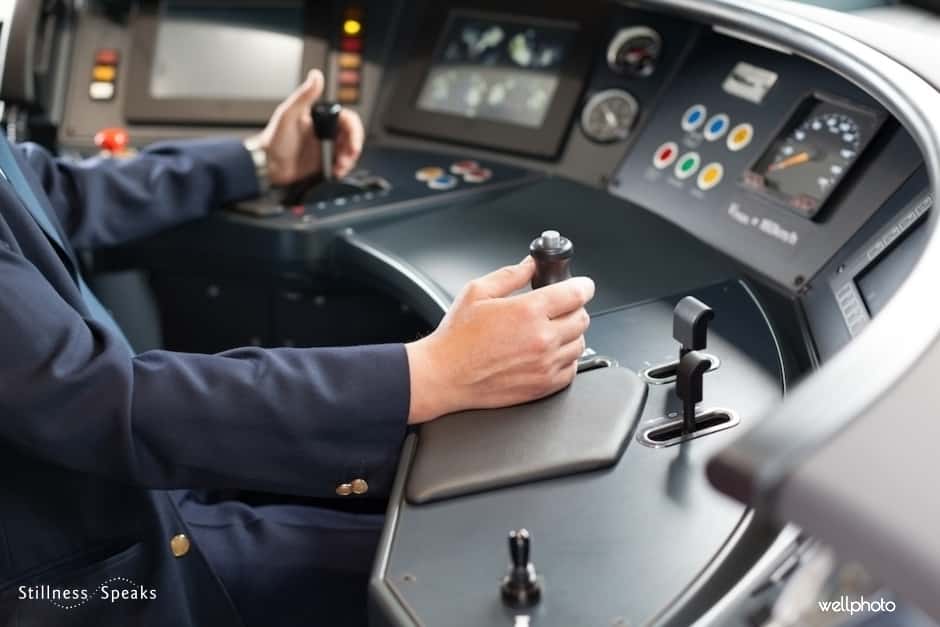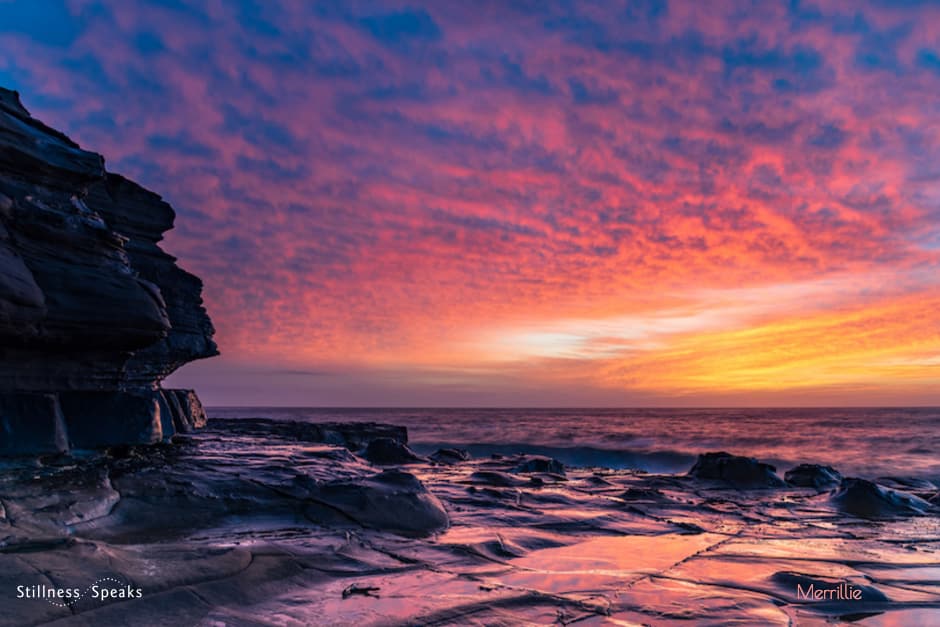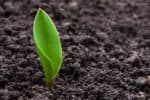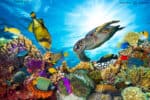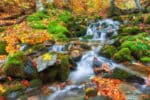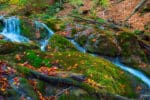choiceless choice: “… No wave can ever go off in a direction other than the one in which the whole ocean is moving. We are all a movement of the whole …” ~ Joan Tollifson
“Radical Acceptance is the willingness to experience ourselves and our lives as it is” ~ Tara Brach
Indeed, Tara’s “radical acceptance” is making the choice to live choicelessly – the essence of embracing what is … which is one of the keys to liberation from suffering … as Byron Katie reminds us: “The only time we suffer is when we believe a thought that argues with what is. When the mind is perfectly clear, what is is what we want”
So, today, we resume our deep dive into embracing what is … that began, in October 2020, with Embracing What Is – Beyond Self Improvement … by looking at aspects of the story of “me” … the aspects to do with “choiceless choice” …
… Through Joan Tollifson’s recently (2020) published book Death: The End of Self-Improvement … where she talks about the “only actuality there is” … the “aware presence in which the whole universe is contained” … that which has “no beginning and no end” … the “ever changing process inseparable from everything else in the universe” … that which is “gone forever and {always/still} right here” …
… Part 1 of this multi-part series was the entire opening chapter Dissolving … and
… in Part 2 (excerpts from chapter one titled Stepping Through the Mirror) Joan explored death by talking about … That which “cannot depart from itself ” … the “felt spacious openness at the very core of our being” … and more.
… in Part 3 (the ongoing excerpt from Stepping Through the Mirror) Joan delved deeper into awakening .. or what she terms unbroken wholeness : “… the ever-present actuality … To awaken is to recognize the sacred everywhere, to live in devotion to this luminous presence, to wake up again and again from the dream of what we think is happening …”
… In Part 4 (the concluding excerpt from Stepping Through the Mirror) Joan considers the “natural next” question of what happens after death? … and addresses the subject of near-death experiences, reincarnation, and memories of past lives
… In Part 5 (excerpts from the chapter Beyond Self-Improvement: Embracing What Is) Joan begins an in-depth exploration into “embracing what is” : “… true healing, transformation and liberation begin with the simple acceptance of this moment and this world, just as it is … embracing imperfection, allowing everything to be as it is, loving what is—this is the gateless gate to a fresh start and the utterly new. Oddly enough, this is the secret of freedom …”
In this post, Part 6, Joan continues this in-depth exploration by diving into the story of “me” – the story of “choiceless choice” …
All italicized text is from Death: The End of Self-Improvement by Joan Tollifson and is published here with her (and the publisher New Sarum Press’) generous permission.
Here are all of Joan’s posts on Stillness Speaks … and her website – full of deeply insightful and valuable content for your journey.
Choiceless Choice: the story Of “me” …
“… The end of self-improvement is the realization of what is always already whole and complete, the wholeness that includes the apparent brokenness …”
I went into therapy to sober up from near-fatal drinking back in 1973 and several more times over the years, and it’s quite natural to want to find a solution to certain painful situations such as depression, anxiety, self-hatred, or addictive and compulsive behaviors that are hurting ourselves and others around us. And if we have glimpsed the possibility of living without self-doubt, shame, worry and self-concern, we naturally long to return to that place of freedom and happiness that we have tasted. People go into therapy, take up meditation, go to satsangs, and listen to radical nondualists out of just such a longing.
But paradoxically, it is in some sense the very search for happiness that makes us miserable. That search is predicated on the belief in deficiency and lack, the belief that “this isn’t it.” It is all about a “me” that doesn’t actually exist and a future that never arrives. The end of self-improvement is the realization of what is always already whole and complete, the wholeness that includes the apparent brokenness.
The character we take ourselves to be, which is a mental construction made up of ever-shifting images, memories, thoughts, stories and sensations, has no independent will or volition in the way we imagine it does. That image we see in the mirror is just an image. It has no power to do anything. If we watch closely, we can see that all our urges, interests, abilities, feelings, and thoughts—including this watching and the interest and ability to carry it out—all arise from an unfindable source. The “we” who seemingly does all this is merely a grammatical convention.
That doesn’t mean we don’t have what feels like volition and choice. Obviously, we do. One neuroscientist calls the sense of being a self with agency a neurological sensation. But if we watch closely as choices and decisions unfold, we can see that it is all happening by itself. There is no little helmsman, no self, no “me” inside our head sitting at some giant control panel pulling levers or authoring our thoughts. Our desire to get drunk or sober up, go into therapy, take an aspirin or march for civil rights is all an expression of the totality, as are the outcomes of all such actions. Our emotional reactions and ruminations, our thinking, our apparent successes and failures—this is all happening by itself. The little “me” who seems to be authoring my thoughts and making my choices is not actually doing any of that because that “me” is nothing but a mental image, an idea, a thought-form.
That “me-thought” arises spontaneously either before an action or after an action, taking credit or blame. “I should do that,” or “I did that.” In any moment when that thought-sense of being a separate and vulnerable “me” is absent, nothing is taken personally. We are no longer concerned about outcomes in the same way. We are no longer plagued by guilt, shame, blaming others, or the anxiety of thinking we might “get it wrong” and “ruin our life.” We are simply doing what life moves us to do, as is everyone else, which has actually always been the case. We naturally have compassion for ourselves and others being just as we are in each moment. And the “we” in all these sentences is only a grammatical convention. The sense of separation is absent, and even when it shows up, it is only an appearance. No wave can ever go off in a direction other than the one in which the whole ocean is moving. We are all a movement of the whole, not isolated agents capable of going the wrong way.
But this gets very subtle. It doesn’t mean becoming passive, or picking up the belief that “I” have no free will, that “I” am a helpless robot being pushed around by the universe. That belief is still centered around the idea of a separate entity, a self, now believed to be powerless. That is delusion. Our urges, interests, actions—and our sense of choice—are all part of how life functions and moves. And we are not separate from, or other than, life itself.
The capacity to make better choices can obviously be developed through education, athletic training, psychotherapy, meditation, yoga, and in all kinds of ways—all of which happen choicelessly, even as it appears that “I” am choosing them.
There is a palpable shift that occurs when attention drops out of the thinking mind into stillness and presence. When that happens, in the light of awareness, there is an increase in responsibility (response-ability), the ability to respond rather than react, to move in a more wholesome—holistic, whole, intelligent—way.
This is the beauty of meditation, psychotherapy, various forms of inquiry, and somatic practices such as Feldenkrais, Continuum or yoga. They bring awareness to where we are stuck and show us what else is possible. We become less ensnared in old conditioning, and a new range of possibilities opens up. The habitual me-system is no longer always running the show. We are no longer totally a slave to conditioned neurology. We (as awareness) have more choices, more possibilities, at least sometimes.
Of course, this shift out of thinking and into aware presence happens choicelessly, in that there is no “me” who can bring it about by an act of independent will. But this shift may indeed require an apparently intentional move that we call a choice, a movement that itself arises choicelessly. The possibility of taking a time-out when we’re angry, of not lighting up a cigarette when the urge arises, of choosing to meditate when we feel upset, is only there when it is. Whatever happens is always a movement of the whole. But our functional sense of agency is part of that larger movement, part of how the universe, or consciousness, functions. In a sense, we have no choice but to act as if we have choice.
We can’t land on either free will or no free will because both are conceptual abstractions of a living reality that cannot be captured in any conceptual formulation. The map is not the territory; the word is not the thing. Therefore, it’s so important not to get fixated on one side of a conceptual divide between two abstract ideas, such as choice or choicelessness, self or no self, practice or no practice, effort or effortlessness, because neither side is totally true. It’s very easy to turn what begins as a genuine insight into a limiting or oppressive belief, a new fundamentalist dogma that we then cling to and defend.
Liberation is never about getting the right ideas or the right beliefs. It’s always about direct insight. Believing that there is “no self” is useless, and as a concept, this is a very easy one to totally misunderstand. But if we simply pay attention, we can begin to notice that there are many moments in any ordinary day where we’re not thinking about ourselves and feeling like a separate person. We’re just driving the car, making love, dancing, washing the dishes, changing a diaper, calculating a bunch of numbers, folding the laundry. There’s no “me” in the picture until a thought arises, such as, “Why do I always have to be the one who changes the baby’s diapers?” or “I’m a bad dancer,” or “I wonder if she likes me.” Instantly, with that thought, the mirage of “me” appears on the scene. And we can notice that this mirage is just another passing experience, another weather event in this vast open space of awareness. The awaring presence being and beholding it all is unbound. Present experiencing is without a center or a periphery. It has no inside or outside.
Of course, for most, if not all of us, the me-system does not permanently disappear never to show up again. In moments of inattention and stress, old conditioning tends to return, and for a moment, whether that moment is a few seconds, a few hours or a few weeks, we again feel angry, hurt, defensive, entitled, guilty, or whatever we feel. But more and more, this can be seen. Sometimes we don’t see it. And sometimes we only see it hours or years or decades later. But through practices such as meditation and psychotherapy, we can begin to catch it more quickly, to see it as it is happening, and sometimes even as it is just about to happen, that first tiny seed. We begin to notice how our lip quivers, how our throat constricts, how blood rushes to the head, how our gut tightens, how we are holding our breath or barely breathing—these first tiny signals of upset. In the absolute sense, everything is already perfect, while in the relative sense, there’s always room for improvement—and that’s part of the perfection!
~ Joan Tollifson
As we’ve done since COVID emerged … Go Fund Me needs to be commended for organizing various campaigns targeted towards COVID-19 relief efforts. All of these campaigns are worthy of our attention … but for now we wanted to highlight TWO critical ones that we have donated personally and also as Stillness Speaks:
Despite the financial challenges that are amongst us all, if your situation allows you to donate and help then …
… please visit Frontline Responders Fund’s Go Fund Me page … and help deliver crucial supplies to these frontline responders …
… and/or visit America’s Food Fund Go Fund Me page and help feed the neighbors in need.
And, we again, express our deepest gratitude to a) the COVID-19 Frontline Responders (all the healthcare professionals – doctors, nurses, hospital/medical-services staff – firefighters, law enforcement, volunteers, and any/all the people involved in keeping the “system-at-large” functioning for ALL of us) … and b) Go Fund Me for organizing America’s Food Fund to feed the needy.
THANK YOU!
Stay tuned for more … as Joan continues her in-depth exploration of “embracing what is” … in the next several posts …
Again, here’s Part 1: Death: Dissolving … and Part 2: Totally Obvious Yet Utterly Mysterious … and Part 3: Unbroken Wholeness … and Part 4: After Death: Reincarnation & More … and Part 5: Embracing What Is – Beyond Self Improvement …
All italicized text above (except for the Go Fund Me related text) is from Death: The End of Self-Improvement by Joan Tollifson and is published here with her (and the publisher New Sarum Press’) generous permission.
